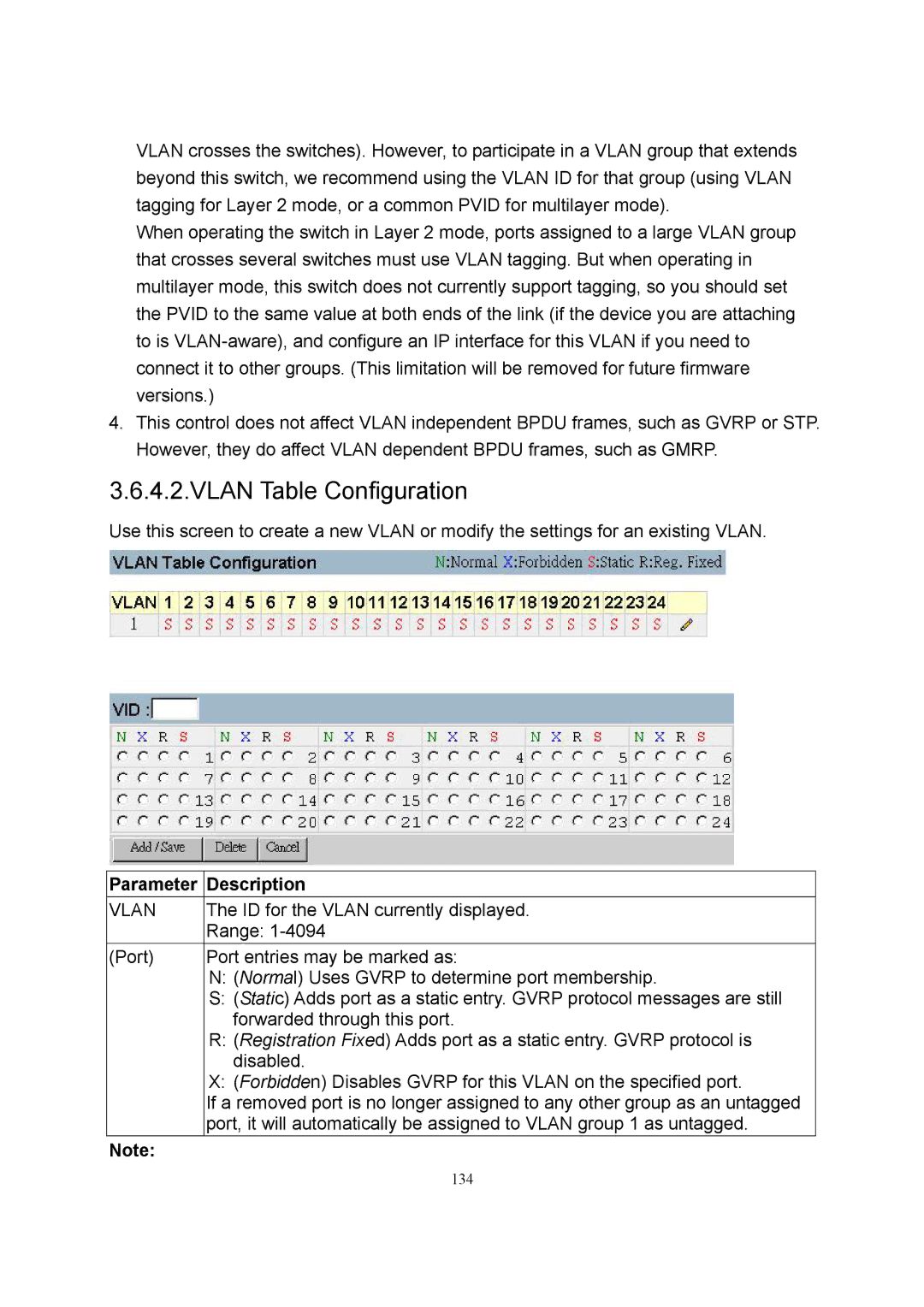
VLAN crosses the switches). However, to participate in a VLAN group that extends beyond this switch, we recommend using the VLAN ID for that group (using VLAN tagging for Layer 2 mode, or a common PVID for multilayer mode).
When operating the switch in Layer 2 mode, ports assigned to a large VLAN group that crosses several switches must use VLAN tagging. But when operating in multilayer mode, this switch does not currently support tagging, so you should set the PVID to the same value at both ends of the link (if the device you are attaching to is
4.This control does not affect VLAN independent BPDU frames, such as GVRP or STP. However, they do affect VLAN dependent BPDU frames, such as GMRP.
3.6.4.2.VLAN Table Configuration
Use this screen to create a new VLAN or modify the settings for an existing VLAN.
Parameter | Description |
VLAN | The ID for the VLAN currently displayed. |
| Range: |
(Port) | Port entries may be marked as: |
| N: (Normal) Uses GVRP to determine port membership. |
| S: (Static) Adds port as a static entry. GVRP protocol messages are still |
| forwarded through this port. |
R:(Registration Fixed) Adds port as a static entry. GVRP protocol is disabled.
X: (Forbidden) Disables GVRP for this VLAN on the specified port.
If a removed port is no longer assigned to any other group as an untagged port, it will automatically be assigned to VLAN group 1 as untagged.
Note:
